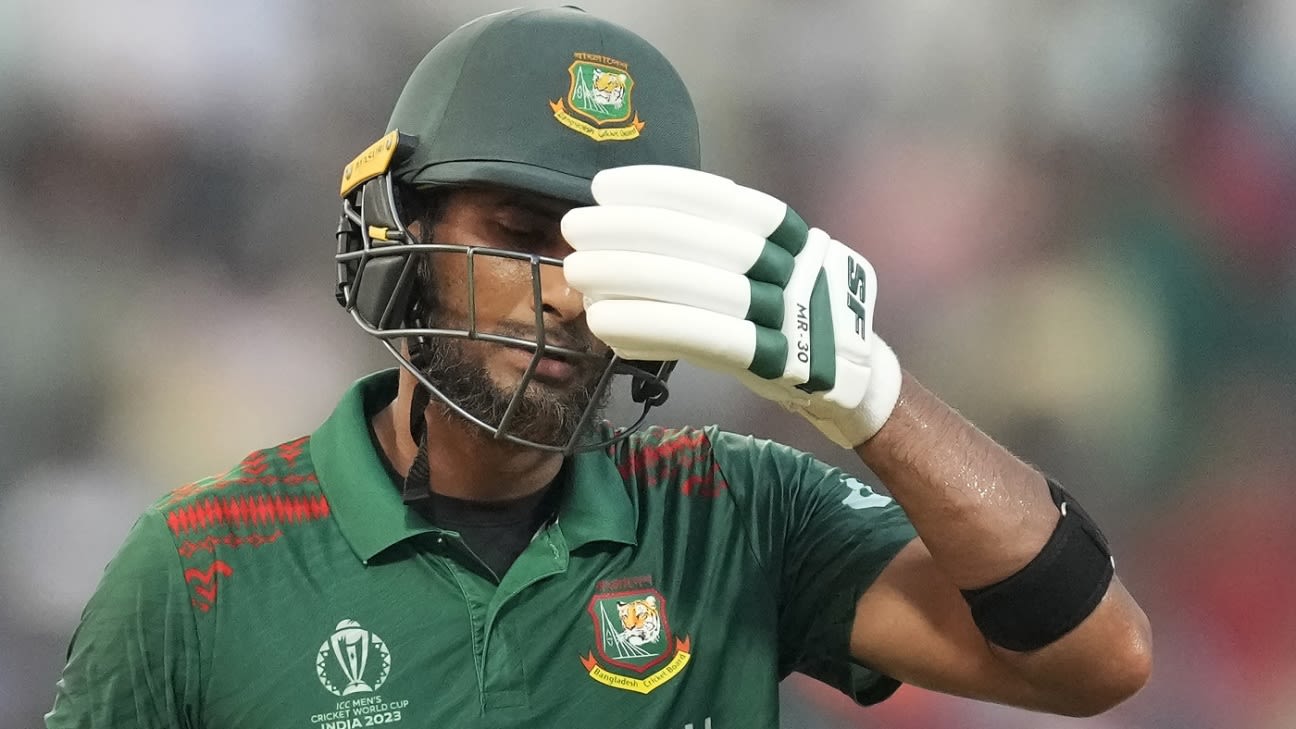Confused, chaotic, controversial: picking through Bangladesh's World Cup
Written by I Dig Sports
The team that finished third in the ICC ODI Super League was expected to do well at the World Cup in India. Bangladesh felt that at least the weather and pitch conditions would be similar to their home conditions. But their perennial obstacle remained the inability to convert bilateral series progress into big tournament success.
Bangladesh's traveling media in India used words like "experimental", "upside-down", "unexplained" and "madness" to describe their regular batting shuffle. When Ravi Shastri joked about Bangladesh's method of choosing the batting line-up on TV commentary, many fans got irate. But nobody really understood why Hathurusinghe and Shakib kept changing the batting line-up in every game.
Shanto was dealing with inconsistent form, batting position changes and then having to lead the side against two big teams. Hridoy's 518 runs leading into the tournament mostly came at No. 5, but he was demoted to No. 7 for most of the tournament. His only big score came when he batted at No 4. Mehidy's new positions also meant that Mushfiqur and Mahmudullah were stuck at playing the fire-fighting role (like stopping batting collapses) from lower batting positions for most of the tournament.
The batting debacle took much of the attention away from their bowling struggles. They didn't have a big score to defend against New Zealand and India, but they bowled poorly against England, South Africa, Pakistan and Australia. They started off well against Afghanistan, and then found a bit of their mojo against the Netherlands and Sri Lanka.
Where did Bangladesh's bowling form go?
Bangladesh's reputation as an emotional cricket team is well-known, so on-field performances are bound to be affected by off-the-field incidents. The change of captain and coach in the six months prior to the World Cup was unsettling. Maybe there was enough time to re-adjust to Hathurusinghe who arrived in late February but the way the ODI captaincy changed, it couldn't have sent the right message to the rest of the team.
The Shakib-Tamim drama
First came the Tamim Iqbal retirement and un-retirement saga in July. He resigned from the captaincy in August, followed by Shakib being named as his successor. Bangladesh's didn't do too well in the Asia Cup but things seemed to be still okay.
If all this was embarrassing for the onlooker, imagine what it was like inside the Bangladesh team's environment. Given his seniority, not many would have questioned Shakib settling scores with Tamim just before the World Cup flight. For a week, it was the only topic on news channels and social media. Tamim was a popular figure in the dressing room, so he wouldn't have completely vanished from the players' minds, as Shakib's takedown was designed to do.
Coaching confusion
There was some hope that the experienced coaching staff could handle such a situation. However, when you looked at the structure of this delegation, it was top heavy. Hathurusinghe was the head coach with Nic Pothas as assistant coach. Mahmud, the board director and former Bangladesh captain who has taken the reign on a number of occasions in several coaching and management capacity, was named team director. Shortly before the World Cup, S Sriram was appointed as the technical consultant. Sriram had also worked with Bangladesh before and during the 2022 T20 World Cup. His designation was the same, but he was effectively the head coach then. He got reviews from most of the players for his man-management skills.
Mahmud described the Bangladesh dressing room as a "quiet place". There were suggestions of that in many of their training sessions and matches. Journalists who have traveled with the team for decades also noticed this overall lack of energy. Generally, their lack of competitiveness in most of their World Cup matches was a reflection of the body language that many had observed in their team hotels and training sessions.
Captain Shakib and coach Hathurusinghe said on multiple occasions during the World Cup that they will only talk about the important stuff after the tournament. Shakib returned after the Sri Lanka game with a finger injury. Hathurusinghe, who usually goes home for a break after most bilateral series, returned with the team to Dhaka on Sunday. Bangladesh have a home Test series coming up in two weeks against New Zealand. Neither have spoken since the Australia game. The usually chatty BCB officials have also been surprisingly quiet in the last 48 hours.
The grind of international cricket may allow Bangladesh to move on quickly from a poor World Cup but the administrators must take a deeper look at what went wrong, not just on the field or off the field, but also what the decision-makers were thinking in every aspect of this team. Of course there's the clamor of fans and followers about poor individual performances or Bangladesh's high dependability on home conditions. Will the BCB be self-critical? Will they ask the players and coaches any questions? Would they dare an investigation?
Mohammad Isam is ESPNcricinfo's Bangladesh correspondent. @isam84















 Phone: (800) 737. 6040
Phone: (800) 737. 6040 Fax: (800) 825 5558
Fax: (800) 825 5558 Website:
Website:  Email:
Email: 






